-
Report Prologue
-
Market Introduction
-
Definition
-
2.2 Scope of the Study
-
2.3 Research Objective
-
2.4 Assumptions & Limitations
-
2.4.1 Assumptions
-
2.4.2 Limitations
-
2.5 Market Structure
-
3 Research
-
Methodology
-
Research Process
-
3.2 Primary Research
-
3.3 Secondary Research
-
3.4 Market Size Estimation 17
-
Market Dynamics
-
Growth Drivers 20
- Wide
- Growing Asia-Pacific Market 21
- Increasing Demand from FMCG and Plastic Packaging Industries 22
-
Range of Applications 21
-
Restraints 22
- Economic Cycle 23
- Stringent
- Increasing Demand - Supply Gap 23
-
Environmental Regulations on Non-Biodegradable Plastic Residues Challenging Market
-
Growth 23
-
Trends
- Emerging Economies 24
-
and Opportunities 24
-
Market
-
Factor Analysis
-
Value Chain Analysis 25
- Raw Material
- Commodity Plastic Manufacturers 25
- End Users 26
-
Suppliers 25
-
Distributor/Supplier 26
-
Porter''s 5
- Threat from New Entrants 27
- Threat of Rivalry 28
-
Forces Analysis 26
-
Bargaining Power of Buyers 27 5.2.3 Bargaining Power of Supplier 27
-
Threat from Substitutes 28
-
Global
-
Commodity Plastic Market, By Type 6.1 Introduction 29
-
Polyethylene
-
Polypropylene 37
-
Polyvinyl Chloride 43
-
Polyethylene Terephthalate 49
-
Polystyrene 55
-
Others Types 61
-
Global Commodity Plastic Market, By Application
-
Introduction 67
-
Packaging 69
-
Consumer
-
Goods 75
-
Electronics 81
-
Automotive 87
-
Textile 93
-
Pharmaceuticals 98
-
Others 104
-
Global Commodity Plastic Market, By Region
-
Introduction 110
-
North America 113
- United States 117
- Canada 119
-
Europe 122
- Germany 125
- United Kingdom 128
- France 131
- Italy
- Rest of Europe 136
-
Asia-Pacific 139
- China 142
- Japan 145
- India 147
- Rest of Asia-Pacific 150
-
Rest of the World (RoW) 153
- Latin America 156
- Middle East & Africa 159
-
Competitive Landscape
-
Introduction: Key Players 162
-
Major Developments 163
- Major Developments, 2023-2032163
-
Key Market Players
-
BASF SE 166
- Company
- Product/Business Segment Overview 166
- Key Developments 167
- Company Overview 168
- PRODUCT/BUSINESS SEGMENT OVERVIEW 168
- Financial Updates
- Key Developments 173
-
Overview 166
-
Financial Updates 167
-
The Dow Chemicals Company 168
-
SABIC 174
- Company Overview 174
- Product/Business Segment Overview
- Financial Updates 175
- Key Developments 175
-
Arkema SA 176
- Company Overview 176
- Product/Business Segment Overview 176
- Financials
- Key Developments 178
-
Updates 177
-
Mitsui Chemicals
- Company Overview 179
- Product/Business Segment
- Financial Updates 180
- Key Developments
-
Overview 179
-
LG Chemicals 182
- Company Overview 182
- Product/Business Segment Overview 182
- Financial
- Key Developments 183
-
Updates 183
-
Mitsubishi
- Company Overview 184
- Product/Business Segment Overview 185
- Financial Updates
- Key Developments 186
-
Chemicals Holdings Corporation 184
-
Conclusion
-
List of Tables TABLE 1 GLOBAL COMMODITY PLASTIC MARKET, BY TYPE, 2023-2032(USD
-
BILLION) 31
-
GLOBAL COMMODITY PLASTIC MARKET, BY TYPE, 2023-2032(MMT)
-
GLOBAL POLYETHYLENE MARKET FOR COMMODITY PLASTIC, BY REGIONS
-
(2023-2032) (USD BILLION) 33
-
GLOBAL POLYETHYLENE MARKET FOR COMMODITY
-
PLASTIC, BY REGIONS (2023-2032) (MMT) 33
-
NORTH AMERICA POLYETHYLENE
-
MARKET FOR COMMODITY PLASTIC, BY REGIONS (2023-2032) (USD BILLION) 34
-
TABLE
-
NORTH AMERICA POLYETHYLENE MARKET FOR COMMODITY PLASTIC, BY REGIONS (2023-2032)
-
(MMT) 34
-
EUROPE POLYETHYLENE MARKET FOR COMMODITY PLASTIC, BY
-
REGIONS (2023-2032) (USD BILLION) 35
-
EUROPE POLYETHYLENE MARKET
-
FOR COMMODITY PLASTIC, BY REGIONS (2023-2032) (MMT) 36
-
TABLE 9
-
ASIA-PACIFIC POLYETHYLENE MARKET FOR COMMODITY PLASTIC, BY REGIONS (2023-2032) (USD
-
BILLION) 36
-
ASIA-PACIFIC POLYETHYLENE MARKET FOR COMMODITY PLASTIC,
-
BY REGIONS (2023-2032) (MMT) 37
-
ROW POLYETHYLENE MARKET FOR
-
COMMODITY PLASTIC, BY REGIONS (2023-2032) (USD BILLION) 37
-
TABLE
-
ROW POLYETHYLENE MARKET FOR COMMODITY PLASTIC, BY REGIONS (2023-2032) (MMT) 38
-
GLOBAL POLYPROPYLENE MARKET FOR COMMODITY PLASTIC, BY REGIONS (2023-2032)
-
(USD BILLION) 39
-
GLOBAL POLYPROPYLENE MARKET FOR COMMODITY
-
PLASTIC, BY REGIONS (2023-2032) (MMT) 40
-
NORTH AMERICA POLYPROPYLENE
-
MARKET FOR COMMODITY PLASTIC, BY REGIONS (2023-2032) (USD BILLION) 40
-
TABLE
-
NORTH AMERICA POLYPROPYLENE MARKET FOR COMMODITY PLASTIC, BY REGIONS (2023-2032)
-
(MMT) 41
-
EUROPE POLYPROPYLENE MARKET FOR COMMODITY PLASTIC,
-
BY REGIONS (2023-2032) (USD MILLION) 41
-
EUROPE POLYPROPYLENE
-
MARKET FOR COMMODITY PLASTIC, BY REGIONS (2023-2032) (MMT) 42
-
TABLE 19
-
ASIA-PACIFIC POLYPROPYLENE MARKET FOR COMMODITY PLASTIC, BY REGIONS (2023-2032)
-
(USD BILLION) 42
-
ASIA-PACIFIC POLYPROPYLENE MARKET FOR
-
COMMODITY PLASTIC, BY REGIONS (2023-2032) (MMT) 43
-
ROW
-
POLYPROPYLENE MARKET FOR COMMODITY PLASTIC, BY REGIONS (2023-2032) (USD BILLION)
-
ROW POLYPROPYLENE MARKET FOR COMMODITY PLASTIC, BY REGIONS
-
(2023-2032) (MMT) 44
-
GLOBAL POLYVINYL CHLORIDE MARKET FOR COMMODITY
-
PLASTIC, BY REGIONS (2023-2032) (USD BILLION) 45
-
GLOBAL
-
POLYVINYL CHLORIDE MARKET FOR COMMODITY PLASTIC, BY REGIONS (2023-2032) (MMT) 46
-
NORTH AMERICA POLYVINYL CHLORIDE MARKET FOR COMMODITY PLASTIC,
-
BY REGIONS (2023-2032) (USD BILLION) 46
-
NORTH AMERICA POLYVINYL
-
CHLORIDE MARKET FOR COMMODITY PLASTIC, BY REGIONS (2023-2032) (MMT) 47
-
EUROPE POLYVINYL CHLORIDE MARKET FOR COMMODITY PLASTIC, BY REGIONS
-
(2023-2032) (USD MILLION) 47
-
EUROPE POLYVINYL CHLORIDE
-
MARKET FOR COMMODITY PLASTIC, BY REGIONS (2023-2032) (MMT) 48
-
TABLE
-
ASIA-PACIFIC POLYVINYL CHLORIDE MARKET FOR COMMODITY PLASTIC, BY REGIONS (2023-2032)
-
(USD BILLION) 48
-
ASIA-PACIFIC POLYVINYL CHLORIDE MARKET FOR
-
COMMODITY PLASTIC, BY REGIONS (2023-2032) (MMT) 49
-
ROW POLYVINYL
-
CHLORIDE MARKET FOR COMMODITY PLASTIC, BY REGIONS (2023-2032) (USD BILLION) 49
-
ROW POLYVINYL CHLORIDE MARKET FOR COMMODITY PLASTIC, BY REGIONS
-
(2023-2032) (MMT) 50
-
GLOBAL POLYETHYLENE TEREPHTHALATE MARKET
-
FOR COMMODITY PLASTIC, BY REGIONS (2023-2032) (USD BILLION) 51
-
TABLE
-
GLOBAL POLYETHYLENE TEREPHTHALATE MARKET FOR COMMODITY PLASTIC, BY REGIONS (2023-2032)
-
(MMT) 52
-
NORTH AMERICA POLYETHYLENE TEREPHTHALATE MARKET FOR
-
COMMODITY PLASTIC, BY REGIONS (2023-2032) (USD BILLION) 52
-
NORTH
-
AMERICA POLYETHYLENE TEREPHTHALATE MARKET FOR COMMODITY PLASTIC, BY REGIONS (2023-2032)
-
(MMT) 53
-
EUROPE POLYETHYLENE TEREPHTHALATE MARKET FOR COMMODITY
-
PLASTIC, BY REGIONS (2023-2032) (USD BILLION) 53
-
EUROPE
-
POLYETHYLENE TEREPHTHALATE MARKET FOR COMMODITY PLASTIC, BY REGIONS (2023-2032)
-
(MMT) 54
-
ASIA-PACIFIC POLYETHYLENE TEREPHTHALATE MARKET FOR
-
COMMODITY PLASTIC, BY REGIONS (2023-2032) (USD BILLION) 54
-
ASIA-PACIFIC
-
POLYETHYLENE TEREPHTHALATE MARKET FOR COMMODITY PLASTIC, BY REGIONS (2023-2032)
-
(MMT) 55
-
ROW POLYETHYLENE TEREPHTHALATE MARKET FOR COMMODITY
-
PLASTIC, BY REGIONS (2023-2032) (USD BILLION) 55
-
ROW POLYETHYLENE
-
TEREPHTHALATE MARKET FOR COMMODITY PLASTIC, BY REGIONS (2023-2032) (MMT) 56
-
GLOBAL POLYSTYRENE MARKET FOR COMMODITY PLASTIC, BY REGIONS (2023-2032)
-
(USD BILLION) 57
-
GLOBAL POLYSTYRENE MARKET FOR COMMODITY
-
PLASTIC, BY REGIONS (2023-2032) (MMT) 58
-
NORTH AMERICA POLYSTYRENE
-
MARKET FOR COMMODITY PLASTIC, BY REGIONS (2023-2032) (USD BILLION) 58
-
TABLE
-
NORTH AMERICA POLYSTYRENE MARKET FOR COMMODITY PLASTIC, BY REGIONS (2023-2032)
-
(MMT) 59
-
EUROPE POLYSTYRENE MARKET FOR COMMODITY PLASTIC, BY
-
REGIONS (2023-2032) (USD BILLION) 59
-
EUROPE POLYSTYRENE MARKET
-
FOR COMMODITY PLASTIC, BY REGIONS (2023-2032) (MMT) 60
-
ASIA-PACIFIC
-
POLYSTYRENE MARKET FOR COMMODITY PLASTIC, BY REGIONS (2023-2032) (USD BILLION) 60
-
ASIA-PACIFIC POLYSTYRENE MARKET FOR COMMODITY PLASTIC, BY REGIONS
-
(2023-2032) (MMT) 61
-
ROW POLYSTYRENE MARKET FOR COMMODITY
-
PLASTIC, BY REGIONS (2023-2032) (USD BILLION) 61
-
ROW POLYSTYRENE
-
MARKET FOR COMMODITY PLASTIC, BY REGIONS (2023-2032) (MMT) 62
-
TABLE 53
-
GLOBAL OTHER TYPES MARKET FOR COMMODITY PLASTIC, BY REGIONS (2023-2032) (USD BILLION)
-
GLOBAL OTHER TYPES MARKET FOR COMMODITY PLASTIC, BY REGIONS
-
(2023-2032) (MMT) 63
-
NORTH AMERICA OTHER TYPES MARKET
-
FOR COMMODITY PLASTIC, BY REGIONS (2023-2032) (USD BILLION) 64
-
TABLE
-
NORTH AMERICA OTHER TYPES MARKET FOR COMMODITY PLASTIC, BY REGIONS (2023-2032)
-
(MMT) 64
-
EUROPE OTHER TYPES MARKET FOR COMMODITY PLASTIC, BY
-
REGIONS (2023-2032) (USD BILLION) 65
-
EUROPE OTHER TYPES MARKET
-
FOR COMMODITY PLASTIC, BY REGIONS (2023-2032) (MMT) 65
-
ASIA-PACIFIC
-
OTHER TYPES MARKET FOR COMMODITY PLASTIC, BY REGIONS (2023-2032) (USD BILLION) 66
-
ASIA-PACIFIC OTHER TYPES MARKET FOR COMMODITY PLASTIC, BY REGIONS
-
(2023-2032) (MMT) 66
-
ROW OTHER TYPES MARKET FOR COMMODITY PLASTIC,
-
BY REGIONS (2023-2032) (USD BILLION) 67
-
ROW OTHER TYPES
-
MARKET FOR COMMODITY PLASTIC, BY REGIONS (2023-2032) (MMT) 67
-
TABLE 63
-
GLOBAL COMMODITY PLASTIC MARKET, BY APPLICATION (2023-2032) (USD BILLION) 68
-
GLOBAL COMMODITY PLASTIC MARKET, BY APPLICATION (2023-2032) (MMT)
-
GLOBAL PACKAGING MARKET FOR COMMODITY PLASTIC, BY REGIONS
-
(2023-2032) (USD BILLION) 71
-
GLOBAL PACKAGING MARKET FOR COMMODITY
-
PLASTIC, BY REGIONS (2023-2032) (MMT) 71
-
NORTH AMERICA PACKAGING
-
MARKET FOR COMMODITY PLASTIC, BY REGIONS (2023-2032) (USD BILLION) 72
-
TABLE
-
NORTH AMERICA PACKAGING MARKET FOR COMMODITY PLASTIC, BY REGIONS (2023-2032)
-
(MMT) 72
-
EUROPE PACKAGING MARKET FOR COMMODITY PLASTIC, BY REGIONS
-
(2023-2032) (USD BILLION) 73
-
EUROPE PACKAGING MARKET FOR COMMODITY
-
PLASTIC, BY REGIONS (2023-2032) (MMT) 74
-
ASIA-PACIFIC PACKAGING
-
MARKET FOR COMMODITY PLASTIC, BY REGIONS (2023-2032) (USD BILLION) 74
-
TABLE
-
ASIA-PACIFIC PACKAGING MARKET FOR COMMODITY PLASTIC, BY REGIONS (2023-2032) (MMT)
-
ROW PACKAGING MARKET FOR COMMODITY PLASTIC, BY REGIONS
-
(2023-2032) (USD BILLION) 75
-
ROW PACKAGING MARKET FOR COMMODITY
-
PLASTIC, BY REGIONS (2023-2032) (MMT) 76
-
GLOBAL CONSUMER GOODS
-
MARKET FOR COMMODITY PLASTIC, BY REGIONS (2023-2032) (USD BILLION) 77
-
TABLE
-
GLOBAL CONSUMER GOODS MARKET FOR COMMODITY PLASTIC, BY REGIONS (2023-2032) (MMT)
-
NORTH AMERICA CONSUMER GOODS MARKET FOR COMMODITY PLASTIC,
-
BY REGIONS (2023-2032) (USD BILLION) 78
-
NORTH AMERICA CONSUMER
-
GOODS MARKET FOR COMMODITY PLASTIC, BY REGIONS (2023-2032) (MMT) 79
-
TABLE
-
EUROPE CONSUMER GOODS MARKET FOR COMMODITY PLASTIC, BY REGIONS (2023-2032) (USD
-
BILLION) 79
-
EUROPE CONSUMER GOODS MARKET FOR COMMODITY PLASTIC,
-
BY REGIONS (2023-2032) (MMT) 80
-
ASIA-PACIFIC CONSUMER GOODS
-
MARKET FOR COMMODITY PLASTIC, BY REGIONS (2023-2032) (USD BILLION) 80
-
TABLE
-
ASIA-PACIFIC CONSUMER GOODS MARKET FOR COMMODITY PLASTIC, BY REGIONS (2023-2032)
-
(MMT) 81
-
ROW CONSUMER GOODS MARKET FOR COMMODITY PLASTIC, BY
-
REGIONS (2023-2032) (USD BILLION) 81
-
ROW CONSUMER GOODS MARKET
-
FOR COMMODITY PLASTIC, BY REGIONS (2023-2032) (MMT) 82
-
GLOBAL
-
ELECTRONICS MARKET FOR COMMODITY PLASTIC, BY REGIONS (2023-2032) (USD BILLION) 83
-
GLOBAL ELECTRONICS MARKET FOR COMMODITY PLASTIC, BY REGIONS (2023-2032)
-
(MMT) 84
-
NORTH AMERICA ELECTRONICS MARKET FOR COMMODITY PLASTIC,
-
BY REGIONS (2023-2032) (USD BILLION) 84
-
NORTH AMERICA ELECTRONICS
-
MARKET FOR COMMODITY PLASTIC, BY REGIONS (2023-2032) (MMT) 85
-
TABLE 89
-
EUROPE ELECTRONICS MARKET FOR COMMODITY PLASTIC, BY REGIONS (2023-2032) (USD BILLION)
-
EUROPE ELECTRONICS MARKET FOR COMMODITY PLASTIC, BY REGIONS
-
(2023-2032) (MMT) 86
-
ASIA-PACIFIC ELECTRONICS MARKET FOR COMMODITY
-
PLASTIC, BY REGIONS (2023-2032) (USD BILLION) 86
-
ASIA-PACIFIC
-
ELECTRONICS MARKET FOR COMMODITY PLASTIC, BY REGIONS (2023-2032) (MMT) 87
-
ROW ELECTRONICS MARKET FOR COMMODITY PLASTIC, BY REGIONS (2023-2032)
-
(USD BILLION) 87
-
ROW ELECTRONICS MARKET FOR COMMODITY PLASTIC,
-
BY REGIONS (2023-2032) (MMT) 88
-
GLOBAL AUTOMOTIVE MARKET FOR
-
COMMODITY PLASTIC, BY REGIONS (2023-2032) (USD BILLION) 89
-
GLOBAL
-
AUTOMOTIVE MARKET FOR COMMODITY PLASTIC, BY REGIONS (2023-2032) (MMT) 89
-
NORTH AMERICA AUTOMOTIVE MARKET FOR COMMODITY PLASTIC, BY REGIONS (2023-2032)
-
(USD BILLION) 90
-
NORTH AMERICA AUTOMOTIVE MARKET FOR COMMODITY
-
PLASTIC, BY REGIONS (2023-2032) (MMT) 90
-
EUROPE AUTOMOTIVE MARKET
-
FOR COMMODITY PLASTIC, BY REGIONS (2023-2032) (USD BILLION) 91
-
TABLE
-
EUROPE AUTOMOTIVE MARKET FOR COMMODITY PLASTIC, BY REGIONS (2023-2032) (MMT)
-
ASIA-PACIFIC AUTOMOTIVE MARKET FOR COMMODITY PLASTIC, BY
-
REGIONS (2023-2032) (USD BILLION) 92
-
ASIA-PACIFIC AUTOMOTIVE
-
MARKET FOR COMMODITY PLASTIC, BY REGIONS (2023-2032) (MMT) 92
-
TABLE 103
-
ROW AUTOMOTIVE MARKET FOR COMMODITY PLASTIC, BY REGIONS (2023-2032) (USD BILLION)
-
ROW AUTOMOTIVE MARKET FOR COMMODITY PLASTIC, BY REGIONS
-
(2023-2032) (MMT) 93
-
GLOBAL TEXTILE MARKET FOR COMMODITY PLASTIC,
-
BY REGIONS (2023-2032) (USD BILLION) 94
-
GLOBAL TEXTILE MARKET
-
FOR COMMODITY PLASTIC, BY REGIONS (2023-2032) (MMT) 95
-
NORTH
-
AMERICA TEXTILE MARKET FOR COMMODITY PLASTIC, BY REGIONS (2023-2032) (USD BILLION)
-
NORTH AMERICA TEXTILE MARKET FOR COMMODITY PLASTIC, BY REGIONS
-
(2023-2032) (MMT) 96
-
EUROPE TEXTILE MARKET FOR COMMODITY PLASTIC,
-
BY REGIONS (2023-2032) (USD BILLION) 96
-
EUROPE TEXTILE MARKET
-
FOR COMMODITY PLASTIC, BY REGIONS (2023-2032) (MMT) 97
-
ASIA-PACIFIC
-
TEXTILE MARKET FOR COMMODITY PLASTIC, BY REGIONS (2023-2032) (USD BILLION) 97
-
ASIA-PACIFIC TEXTILE MARKET FOR COMMODITY PLASTIC, BY REGIONS
-
(2023-2032) (MMT) 98
-
ROW TEXTILE MARKET FOR COMMODITY PLASTIC,
-
BY REGIONS (2023-2032) (USD BILLION) 98
-
ROW TEXTILE MARKET
-
FOR COMMODITY PLASTIC, BY REGIONS (2023-2032) (MMT) 99
-
GLOBAL
-
PHARMACEUTICALS MARKET FOR COMMODITY PLASTIC, BY REGIONS (2023-2032) (USD BILLION)
-
GLOBAL PHARMACEUTICALS MARKET FOR COMMODITY PLASTIC, BY
-
REGIONS (2023-2032) (MMT) 100
-
NORTH AMERICA PHARMACEUTICALS
-
MARKET FOR COMMODITY PLASTIC, BY REGIONS (2023-2032) (USD BILLION) 101
-
NORTH AMERICA PHARMACEUTICALS MARKET FOR COMMODITY PLASTIC, BY REGIONS
-
(2023-2032) (MMT) 101
-
EUROPE PHARMACEUTICALS MARKET FOR
-
COMMODITY PLASTIC, BY REGIONS (2023-2032) (USD BILLION) 102
-
TABLE 120
-
EUROPE PHARMACEUTICALS MARKET FOR COMMODITY PLASTIC, BY REGIONS (2023-2032) (MMT)
-
ASIA-PACIFIC PHARMACEUTICALS MARKET FOR COMMODITY PLASTIC,
-
BY REGIONS (2023-2032) (USD BILLION) 102
-
ASIA-PACIFIC PHARMACEUTICALS
-
MARKET FOR COMMODITY PLASTIC, BY REGIONS (2023-2032) (MMT) 103
-
TABLE
-
ROW PHARMACEUTICALS MARKET FOR COMMODITY PLASTIC, BY REGIONS (2023-2032) (USD
-
BILLION) 104
-
ROW PHARMACEUTICALS MARKET FOR COMMODITY PLASTIC,
-
BY REGIONS (2023-2032) (MMT) 104
-
GLOBAL OTHER APPLICATIONS
-
MARKET FOR COMMODITY PLASTIC, BY REGIONS (2023-2032) (USD BILLION) 105
-
GLOBAL OTHER APPLICATIONS MARKET FOR COMMODITY PLASTIC, BY REGIONS (2023-2032)
-
(MMT) 106
-
NORTH AMERICA OTHER APPLICATIONS MARKET FOR COMMODITY
-
PLASTIC, BY REGIONS (2023-2032) (USD BILLION) 106
-
NORTH AMERICA
-
OTHER APPLICATIONS MARKET FOR COMMODITY PLASTIC, BY REGIONS (2023-2032) (MMT) 107
-
EUROPE OTHER APPLICATIONS MARKET FOR COMMODITY PLASTIC, BY REGIONS
-
(2023-2032) (USD BILLION) 107
-
EUROPE OTHER APPLICATIONS MARKET
-
FOR COMMODITY PLASTIC, BY REGIONS (2023-2032) (MMT) 108
-
ASIA-PACIFIC
-
OTHER APPLICATIONS MARKET FOR COMMODITY PLASTIC, BY REGIONS (2023-2032) (USD BILLION)
-
ASIA-PACIFIC OTHER APPLICATIONS MARKET FOR COMMODITY PLASTIC,
-
BY REGIONS (2023-2032) (MMT) 109
-
ROW OTHER APPLICATIONS MARKET
-
FOR COMMODITY PLASTIC, BY REGIONS (2023-2032) (USD BILLION) 109
-
TABLE
-
ROW OTHER APPLICATIONS MARKET FOR COMMODITY PLASTIC, BY REGIONS (2023-2032)
-
(MMT) 110
-
GLOBAL COMMODITY PLASTIC MARKET, BY REGION 2023-2032(USD
-
BILLION) 111
-
GLOBAL COMMODITY PLASTIC MARKET, BY REGION, 2023-2032(MMT)
-
GLOBAL COMMODITY PLASTIC MARKET, BY TYPE, 2023-2032(USD
-
BILLION) 112
-
GLOBAL COMMODITY PLASTIC MARKET, BY TYPE, 2023-2032(MMT)
-
GLOBAL COMMODITY PLASTIC MARKET, BY APPLICATION, 2023-2032(USD
-
BILLION) 113
-
GLOBAL COMMODITY PLASTIC MARKET, BY APPLICATION,
-
NORTH AMERICA COMMODITY PLASTIC MARKET,
-
BY COUNTRY, 2023-2032(USD BILLION) 114
-
NORTH AMERICA COMMODITY
-
PLASTIC MARKET, BY COUNTRY, 2023-2032(MMT) 115
-
NORTH AMERICA
-
COMMODITY PLASTIC MARKET, BY TYPE, 2023-2032(USD BILLION) 115
-
TABLE 144
-
NORTH AMERICA COMMODITY PLASTIC MARKET, BY TYPE, 2023-2032(MMT) 116
-
TABLE
-
NORTH AMERICA COMMODITY PLASTIC MARKET, BY APPLICATION, 2023-2032(USD BILLION)
-
NORTH AMERICA COMMODITY PLASTIC MARKET, BY APPLICATION,
-
US COMMODITY PLASTIC MARKET, BY TYPE, 2023-2032(USD
-
BILLION) 118
-
US COMMODITY PLASTIC MARKET, BY TYPE, 2023-2032(MMT)
-
US COMMODITY PLASTIC MARKET, BY APPLICATION, 2023-2032(USD
-
BILLION) 119
-
US COMMODITY PLASTIC MARKET, BY APPLICATION, 2023-2032(MMT)
-
CANADA COMMODITY PLASTIC MARKET, BY TYPE, 2023-2032(USD
-
BILLION) 120
-
CANADA COMMODITY PLASTIC MARKET, BY TYPE, 2023-2032(MMT)
-
CANADA COMMODITY PLASTIC MARKET, BY APPLICATION, 2023-2032(USD
-
BILLION) 122
-
CANADA COMMODITY PLASTIC MARKET, BY APPLICATION,
-
EUROPE COMMODITY PLASTIC MARKET, BY COUNTRY,
-
EUROPE COMMODITY PLASTIC MARKET,
-
BY COUNTRY, 2023-2032(MMT) 123
-
EUROPE COMMODITY PLASTIC MARKET,
-
BY TYPE, 2023-2032(USD BILLION) 124
-
EUROPE COMMODITY
-
PLASTIC MARKET, BY TYPE, 2023-2032(MMT) 124
-
EUROPE COMMODITY
-
PLASTIC MARKET, BY APPLICATION, 2023-2032(USD BILLION) 125
-
TABLE 160
-
EUROPE COMMODITY PLASTIC MARKET, BY APPLICATION, 2023-2032(MMT) 126
-
TABLE
-
GERMANY COMMODITY PLASTIC MARKET, BY TYPE, 2023-2032(USD BILLION) 126
-
GERMANY COMMODITY PLASTIC MARKET, BY TYPE, 2023-2032(MMT) 127
-
GERMANY COMMODITY PLASTIC MARKET, BY APPLICATION, 2023-2032(USD BILLION)128
-
GERMANY COMMODITY PLASTIC MARKET, BY APPLICATION, 2023-2032(MMT)
-
UK COMMODITY PLASTIC MARKET, BY TYPE, 2023-2032(USD BILLION)
-
UK COMMODITY PLASTIC MARKET, BY TYPE, 2023-2032(MMT)
-
UK COMMODITY PLASTIC MARKET, BY APPLICATION, 2023-2032(USD
-
BILLION) 130
-
UK COMMODITY PLASTIC MARKET, BY APPLICATION,
-
FRANCE COMMODITY PLASTIC MARKET, BY
-
TYPE, 2023-2032(USD BILLION) 132
-
FRANCE COMMODITY PLASTIC
-
MARKET, BY TYPE, 2023-2032(MMT) 132
-
FRANCE COMMODITY
-
PLASTIC MARKET, BY APPLICATION, 2023-2032(USD BILLION) 133
-
TABLE 172
-
FRANCE COMMODITY PLASTIC MARKET, BY APPLICATION, 2023-2032(MMT) 134
-
TABLE
-
ITALY COMMODITY PLASTIC MARKET, BY TYPE, 2023-2032(USD BILLION) 134
-
ITALY COMMODITY PLASTIC MARKET, BY TYPE, 2023-2032(MMT) 135
-
ITALY COMMODITY PLASTIC MARKET, BY APPLICATION, 2023-2032(USD
-
BILLION) 136
-
ITALY COMMODITY PLASTIC MARKET, BY APPLICATION,
-
REST OF EUROPE COMMODITY PLASTIC MARKET,
-
BY TYPE, 2023-2032(USD BILLION) 137
-
REST OF EUROPE COMMODITY
-
PLASTIC MARKET, BY TYPE, 2023-2032(MMT) 138
-
REST OF EUROPE
-
COMMODITY PLASTIC MARKET, BY APPLICATION, 2023-2032(USD BILLION) 138
-
TABLE
-
REST OF EUROPE COMMODITY PLASTIC MARKET, BY APPLICATION, 2023-2032(MMT) 139
-
ASIA-PACIFIC COMMODITY PLASTIC MARKET, BY COUNTRY, 2023-2032(USD
-
BILLION) 140
-
ASIA-PACIFIC COMMODITY PLASTIC MARKET, BY COUNTRY,
-
ASIA-PACIFIC COMMODITY PLASTIC MARKET, BY
-
TYPE, 2023-2032(USD BILLION) 141
-
ASIA-PACIFIC COMMODITY PLASTIC
-
MARKET, BY TYPE, 2023-2032(MMT) 141
-
ASIA-PACIFIC COMMODITY
-
PLASTIC MARKET, BY APPLICATION, 2023-2032(USD BILLION) 142
-
TABLE 186
-
ASIA-PACIFIC COMMODITY PLASTIC MARKET, BY APPLICATION, 2023-2032(MMT) 143
-
CHINA COMMODITY PLASTIC MARKET, BY TYPE, 2023-2032(USD BILLION) 143
-
CHINA COMMODITY PLASTIC MARKET, BY TYPE, 2023-2032(MMT) 144
-
CHINA COMMODITY PLASTIC MARKET, BY APPLICATION, 2023-2032(USD
-
BILLION) 145
-
CHINA COMMODITY PLASTIC MARKET, BY APPLICATION,
-
JAPAN COMMODITY PLASTIC MARKET, BY TYPE,
-
JAPAN COMMODITY PLASTIC MARKET,
-
BY TYPE, 2023-2032(MMT) 147
-
JAPAN COMMODITY PLASTIC MARKET,
-
BY APPLICATION, 2023-2032(USD BILLION) 147
-
JAPAN COMMODITY
-
PLASTIC MARKET, BY APPLICATION, 2023-2032(MMT) 148
-
INDIA COMMODITY
-
PLASTIC MARKET, BY TYPE, 2023-2032(USD BILLION) 148
-
INDIA COMMODITY
-
PLASTIC MARKET, BY TYPE, 2023-2032(MMT) 149
-
INDIA COMMODITY
-
PLASTIC MARKET, BY APPLICATION, 2023-2032(USD BILLION) 150
-
TABLE 198
-
INDIA COMMODITY PLASTIC MARKET, BY APPLICATION, 2023-2032(MMT) 150
-
TABLE
-
REST OF ASIA-PACIFIC COMMODITY PLASTIC MARKET, BY TYPE, 2023-2032(USD BILLION)
-
REST OF ASIA-PACIFIC COMMODITY PLASTIC MARKET, BY
-
TYPE, 2023-2032(MMT) 152
-
REST OF ASIA-PACIFIC COMMODITY PLASTIC
-
MARKET, BY APPLICATION, 2023-2032(USD BILLION) 152
-
REST OF
-
ASIA-PACIFIC COMMODITY PLASTIC MARKET, BY APPLICATION, 2023-2032(MMT) 153
-
ROW COMMODITY PLASTIC MARKET, BY COUNTRY, 2023-2032(USD BILLION) 154
-
ROW COMMODITY PLASTIC MARKET, BY COUNTRY, 2023-2032(MMT) 154
-
ROW COMMODITY PLASTIC MARKET, BY TYPE, 2023-2032(USD BILLION)
-
ROW COMMODITY PLASTIC MARKET, BY TYPE, 2023-2032(MMT) 155
-
ROW COMMODITY PLASTIC MARKET, BY APPLICATION, 2023-2032(USD BILLION)
-
ROW COMMODITY PLASTIC MARKET, BY APPLICATION, 2023-2032(MMT)
-
LATIN AMERICA COMMODITY PLASTIC MARKET, BY TYPE, 2023-2032(USD
-
BILLION) 157
-
LATIN AMERICA COMMODITY PLASTIC MARKET, BY TYPE,
-
LATIN AMERICA COMMODITY PLASTIC MARKET,
-
BY APPLICATION, 2023-2032(USD BILLION) 159
-
LATIN AMERICA COMMODITY
-
PLASTIC MARKET, BY APPLICATION, 2023-2032(MMT) 159
-
MIDDLE EAST
-
& AFRICA COMMODITY PLASTIC MARKET, BY TYPE, 2023-2032(USD BILLION) 160
-
MIDDLE EAST & AFRICA COMMODITY PLASTIC MARKET, BY TYPE, 2023-2032(MMT)
-
MIDDLE EAST & AFRICA COMMODITY PLASTIC MARKET, BY APPLICATION,
-
MIDDLE EAST & AFRICA COMMODITY
-
PLASTIC MARKET, BY APPLICATION, 2023-2032(MMT) 162
-
List of
-
Figures
-
GLOBAL COMMODITY PLASTIC MARKET OUTLOOK (2020-2022)
-
RESRARCH PROCESS OF MRFR 16
-
TOP DOWN
-
& BOTTOM DOWN APPROACH 18 FIGURE 4 FORECAST MODEL 19
-
MARKET
-
DYNAMICS 20
-
GROWTH DRIVERS: IMPACT ANALYSIS 20
-
FIGURE
-
GROWTH RESTRAINTS: IMPACT ANALYSIS 22
-
VALUE CHAIN ANALYSIS
-
PORTER’S FIVE FORCES ANALYSIS 26
-
FIGURE
-
GLOBAL COMMODITY PLASTIC MARKET SHARE, BY TYPE IN 2020 29
-
FIGURE 11
-
GLOBAL POLYETHYLENE MARKET FOR COMMODITY PLASTIC, BY REGION, 2020 (%) 31
-
GLOBAL POLYPROPYLENE MARKET FOR COMMODITY PLASTIC, BY REGION, 2020 (%)
-
GLOBAL POLYVINYL CHLORIDE MARKET FOR COMMODITY PLASTIC,
-
BY REGION, 2020 (%) 44
-
GLOBAL POLYETHYLENE TEREPHTHALATE MARKET
-
FOR COMMODITY PLASTIC, BY REGION, 2020 (%) 50
-
GLOBAL POLYSTYRENE
-
MARKET FOR COMMODITY PLASTIC, BY REGION, 2020 (%) 56
-
GLOBAL
-
OTHER TYPES MARKET FOR COMMODITY PLASTIC, BY REGION, 2020 (%) 61
-
FIGURE
-
GLOBAL COMMODITY PLASTIC REVENUE MARKET SHARE (%), BY APPLICATION (2020) 67
-
GLOBAL COMMODITY PLASTIC VOLUME MARKET SHARE, BY APPLICATION (2020)
-
GLOBAL PACKAGING MARKET FOR COMMODITY PLASTIC, BY REGION,
-
GLOBAL CONSUMER GOODS MARKET FOR COMMODITY PLASTIC,
-
BY REGION, 2020 (%) 76
-
GLOBAL ELECTRONICS MARKET FOR COMMODITY
-
PLASTIC, BY REGION, 2020 (%) 82
-
GLOBAL AUTOMOTIVE MARKET FOR
-
COMMODITY PLASTIC, BY REGION, 2020 (%) 87
-
GLOBAL TEXTILE MARKET
-
FOR COMMODITY PLASTIC, BY REGION, 2020 (%) 93
-
GLOBAL PHARMACEUTICALS
-
MARKET FOR COMMODITY PLASTIC, BY REGION, 2020 (%) 98
-
GLOBAL
-
OTHER APPLICATIONS MARKET FOR COMMODITY PLASTIC, BY REGION, 2020 (%) 104
-
GLOBAL COMMODITY PLASTIC MARKST SHARE BY REGION IN 2020 (%) 110
-
EXPANSION: THE MAJOR STRATERGY ADOPTED BY, KEY PLAYERS, 2023-2032162
-
BASF SE: RECENT FINANCIALS 167
-
DOW CHEMICLS:
-
RECENT FINANCIALS 172
-
SABIC: RECENT FINANCILS 175
-
ARKEMA SA: RECENT FINANCIALS 177
-
MITSUI CHEMICALS:
-
RECENT FINANCIALS 180
-
LG CHEM: RECENT FINANCIALS 183
-
MITSUBISHI CHEMICALS HOLDINGS CORPORATION: FINANCIAL UPDATES 186
-
GLOBAL COMMODITY PLASTIC MARKET SHARE AND CAGR % (2020) 188
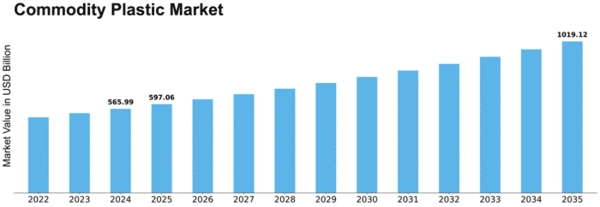

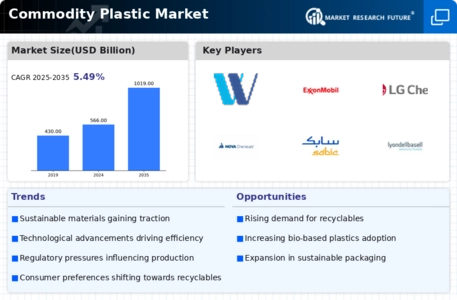

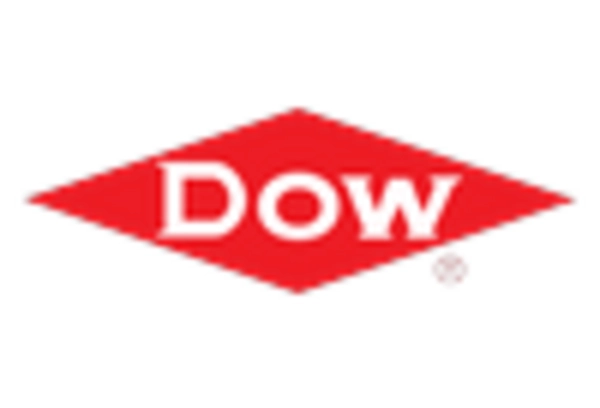

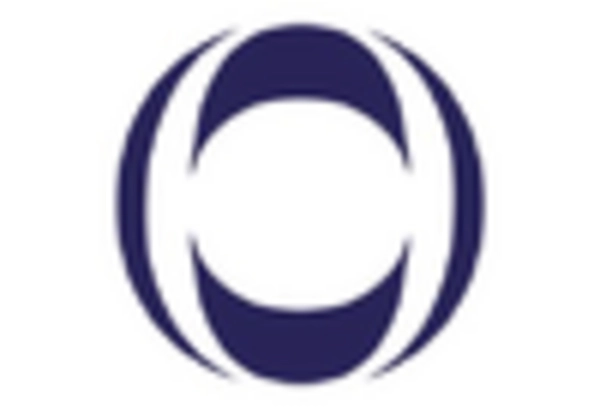
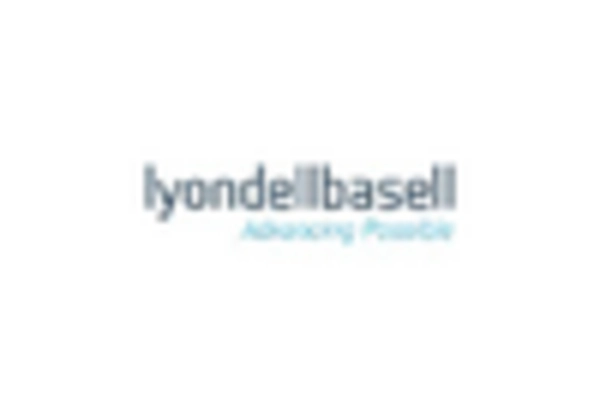










Leave a Comment